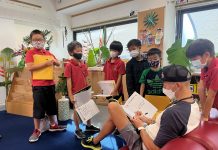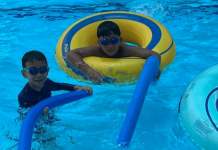What is 4EH Learning Now?
Reading:
In our new Reader’s Workshop Unit, we will focus on discussion skills for developing thoughtful readers. Here are some of the focus points:
– Conversation strategies (parallel vs cross-talk, body signals, talking through the circle)
– Accumulating and collecting evidence (language to connect ideas, listening actively, jotting down thinking, developing theories about characters, discussing themes)
– Transitioning from talk to writing (articulating thinking, disagreeing respectfully, orchestrating discussions)
In addition, we will continue to develop reading strategies as we follow characters into meaning. Focus points in this area revolve around the concepts of envisionment, prediction and inference.
Writing:
In our third unit, we will move on to writing essays. With this different genre, we will be learning about the structure of an essay, the
importance of a thesis, ways to support this thesis, and effective ways to write a conclusion. Students will be given the opportunity to
select their own thesis and home discussion and inquiry is encouraged.
Science:
STRUCTURES OF LIFE
Central Idea:
All organisms have needs and structures that help them survive and grow.
Key Concepts: form, function, connection, change
Highlighted Profiles:
Empowered (knowledge), Literate, Skilled Inquirer
Highlighted Core Values: Excellence, Collaboration
Related Concepts:
– living vs non-living
– classification / characteristics
– needs
– habitat/environment
– behaviors
– life-cycles/change
– adaptation & extinction
Lines of inquiry:
– Basic needs for an organism’s survival (function)
– Different structures of an organism and how they serve different functions in growth, survival and reproduction (form, function, connection)
– The life cycle of different living things (change)
Math:
Our Study of Data and Analysis will continue this week. Student have been studying landmarks and different types of data displays.
Here is some key vocabulary:
maximum, minimum, range, mode, mean, median, line plot, tally chart, stem and leaf chart, bar graph
- Data can be can be organized in different ways (tally charts, tally charts with intervals for grouped data, line plots)
- There are different ways to display data (bar graphs, line graphs, pictographs) – Which way is most suitable or effective?
- Landmark numbers can help us analyze the data (minimum, maximum, range, median, mode, mean) – What could the set of data be when given certain landmark numbers?
We will have our unit test on Monday, October 15th. Our next unit of study in math will be numbers and operations. Students will be given a pretest and then placed into the most appropriate group that will focus on their particular area of instructional need.




